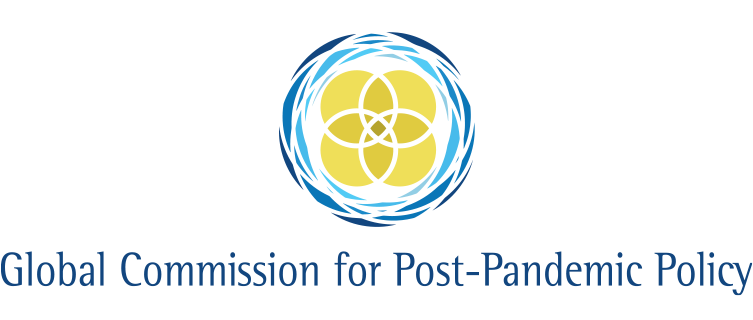The coming emerging-market crisis
By Dylan Barry
In developing countries, a potentially massive debt crisis is brewing. This threatens also to expose fractures in the international order and the poor state of global collaboration
On November 13th the Republic of Zambia opted to renege on a $42.5 million debt repayment owed to the country’s foreign creditors. With that, the third largest economy in Southern Africa officially entered default. A fortnight later, Suriname followed suit by seeking new terms with its creditors after missing an interest payment. Lebanon, Ecuador, Argentina and Venezuela have also made debt defaults or restructurings this year. Next year will likely bring many more. While rich countries will likely face no difficulties in financing their high levels of public debt, the same will not be true of many poorer nations.
According to the International Monetary Fund (IMF) about half of low-income countries and several emerging-market economies were already at a high risk of debt crisis going into the pandemic. Next year, Goldman Sachs reckons the odds of default in Iraq, Sri Lanka, Angola and Gabon are high, with Mozambique, Mongolia, Pakistan, Belarus and El Salvador not far behind.
The seeds of this new crisis were planted in the wake of the 2008 global financial crisis, when interest rates nosedived and have remained historically low ever since. So investors went hunting for risk and thus higher yields, which many found in emerging market and other developing economy debt
This was amplified by the emergence of China as the world’s biggest creditor. Writing in the Harvard Business Review in February Carmen Reinhart (now chief economist at the World Bank), Sebastian Horn and Christian Trebesch estimated that the Chinese state and its subsidiaries have now made $1.5 trillion in direct loans and trade credits to more than 150 countries around the globe. Much of this went through its massive “Belt and Road” infrastructure initiative. Outstanding claims held by China are now equal to more than 6% of global GDP; as a lender China now surpasses all OECD governments combined, and far exceeds the World Bank and IMF.
With all this cash on offer, developing economies have been eager to borrow. Zambia was a case in point. The country is the continent’s second largest producer of copper and––as commodity prices soared between 2001 and 2011––its economy expanded rapidly. But in late 2011, commodity prices began what would be a five-year collapse, and, by 2016, the price of copper had more than halved. To finance a growing budget deficit, Zambia began borrowing heavily: the country issued $3 billion in dollar-denominated eurobonds to private investors. That figure was then matched by $3 billion in loans from China and Chinese entities.
By January 2020, Zambia’s sovereign debt had reached $11.2 billion, more than doubling inside five years. Since 2015, the Zambian currency’s exchange rate against the dollar has halved, doubling the real value of the country’s dollar-denominated debt. In 2019, Zambia’s economy grew by only 1.7%––a twenty-year low. Then came the pandemic.
In the last decade, the IMF estimates that in emerging market economies total debt––the sum of public and private debt––increased by the equivalent of 60% of GDP. On the eve of the pandemic, it had reached an all-time high of 170% of GDP.
The health consequences of COVID-19 have hit only a portion of developing countries particularly hard (chiefly in Latin America) but the pandemic’s economic consequences have done more widespread damage. This is especially so for developing economies dependent on global trade or tourism. In Sub-Saharan Africa, the IMF forecasts a 3% contraction in economic activity this year––the worst outcome on record. In Latin America and the Caribbean, the IMF estimates an 8.1% contraction. The recent rebound in commodity prices is too little and too late to undo previous damage and to avert a debt crisis that could cascade around the emerging markets.
What is to be done?
The clearest precedent for what is happening is the 1982 Latin American debt crisis. Two oil price shocks in 1973 and 1979 and low real interest rates precipitated a decade-long wave of borrowing in much of Latin America, notably by Argentina, Brazil and Mexico, from that era’s big creditors, the OPEC oil exporting countries, via international banks. The tightening of monetary policy by the United States Federal Reserve in 1981 brought this to an abrupt halt, pitching the global economy into a two-year recession, raising interest rates and hiking the dollar’s value.
In 1982, Mexican Finance Minister Jesús Silva Herzog told the US Federal Reserve, the US Treasury, and the IMF that his country would have to default. Ultimately, 16 Latin American governments and 11 other developing countries had to have their debts restructured. In response, international financing dried up, plunging much of Latin America into a deep recession. It was only after another round of debt restructuring under the 1989 Brady Plan––named for US Treasury Secretary Nicholas Brady––that the region began to recover. Our Commissioner, Pedro Aspe, was deeply involved as Mexico’s then finance minister and will reflect upon the relevance of those experiences to today’s crises in a future ARGUMENT.
Some action has already been begun to try to avert a similar, but potentially larger, crisis. The IMF has already provided around $31 billion in emergency finance to 76 governments and––under the Catastrophe Containment and Relief Trust––has provided further debt-service relief to the poorest countries.
After calls from the World Bank and IMF, the G20 has also stepped in. The Debt Service Suspension Initiative(DSSI), has made 73 of the poorest countries eligible for a temporary suspension of debt-service payments owed to their sovereign bilateral creditors. Originally scheduled to end on December 31st, 2020, the suspension period has been extended until July 1st, 2021. For the first time, the G20––in partnership with the Paris Club of creditor nations––has also agreed to a common framework for restructuring sovereign government debt in poor countries at risk of default.
However, these measures will not be enough on their own. Firstly, no relief has yet been offered to governments of middle-income developing nations. In Latin America, after defaulting, both Argentina and Ecuador have already had to have their debts with private creditors restructured, with Argentina facing almost immediate questions over the sustainability of even its restructured debt load. Turkey and South Africa are also fragile and even fast-growing economies like India and Indonesia have seen pushback from bond investors as their debt piles mount.
Secondly, private creditors––bondholders and institutional investors––have so far resisted blanket debt-relief measures and insisted on prolonged, case-by-case restructuring negotiations. This could prove damaging: prompt pre-emptive debt restructurings could go a long way in staving off crises, studies show. As a consequence, a recent IMF report proposed a potential overhaul of the current structure for restructuring sovereign debt held by private creditors.
Finally, the role of China further complicates global efforts. In an August interview, David Malpass––President of the World Bank––indicated that around 60% of debt scheduled to be repaid by the poorest countries this year is owed to China. Much of this lending has taken place through the Chinese Development Bank (CDB). While China is a member of the of the G20––and as a bilateral creditor is committed to debt relief through the DSSI––the Chinese Development Bank is technically a private institution, and is exempt from these debt relief measures.
There have been some tentative calls for a move beyond debt relief and debt restructuring on to some level of debt forgiveness for especially distressed nations. The last initiative of this kind was the 1996 Heavily Indebted Poor Countries (HIPC) Initiative, led by the United States––then the world’s only superpower and a major creditor to the 36 countries involved. The initiative, which eventually drew support from 55 other creditor nations, forgave over $16 billion in debt to 36 countries. The modern geopolitics of a similar initiative, however, would be fraught.
The United States––China’s main geostrategic rival––is now a relatively small international creditor, and the Chinese have been loath to extend debt forgiveness or even blanket debt relief for fear of taking a unilateral economic hit. Getting the two superpowers to work in tandem to clean up an emerging-market debt crisis, just as they are in the midst of their own technology and trade battles, will be far from easy.
GCPPP Newsletter
We now publish a weekly newsletter to inform friends and supporters of the Global Commission’s progress and to provide updates when new content is published. Please sign up here:




 Fateme Alaie, Unsplash
Fateme Alaie, Unsplash




